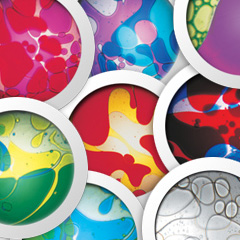After examining my samples there were a few that jumped out at me that I could see having potential for further development. The first was from the punctured exercise. I choose this as I felt that the sun burst patter could be developed further, either on a larger sample or keeping it the sample size. I would like to explore other materials with natural qualities, materials like Nepalese washi paper, bamboo paper, or a Bhutanese paper. Then look at developing the punctured pattern further, using varying sized tools to create a more intricate pattern. Keeping the sunburst pattern still but use smaller and larger holes and create more bursts.
How did your research into the work of artists and designers inspire and inform your practical work?
Research is not one of my strongest areas, its an area I definitely need to focus on throughout MMT. I also begin my research by looking at images either on Google or Pinterest, looking for images that catch my eye and inspire me. That then leads me research the artists work further. One artist which helped to inspire me on my folding exercise was Iris Van Herpen, her geometric folded designs inspired some of my samples within the exercise. I found Pinterest the most useful tool in my research, as I find visual research the most inspiring for me.
Which techniques did you particularly enjoy, and why? If you found a technique frustrating or unsatisfying, did you try to overcome that feeling by changing how you approached it?
I found some of these techniques quite repetitive from the foundation course, so I found it difficult to be motivated or excited. Particularly the folding exercise, which felt like it went on forever.
I have also looked at heating material in previous work, but adding the lightbox behind the material gave a new approach to the exercise. Creating more visual interesting surfaces to capture in my sketchbook.
I felt the puncturing and stitch exercise was the most enjoyable for me. Trying to reflect on why I felt that way, its hard to pinpoint. Perhaps it was the fact it felt like more than a sample it felt like the next step in the development stage. And I felt I could be more creative and experimental with the samples.
Lots of the materials used in this section could be considered quite mundane and commonplace. How did your use of the techniques transform them or invest them with more value or beauty?
I found myself being more resourceful with this assignment, using a lot of found items in my work. And even reusing work from a previous assignment and adapting/developing to be used in other exercises. For example reusing the sheets with cut shapes and using them in the stitched exercise.
I also found it exciting how a dull plastic bag could be transformed into a visually interesting surface, or layering it into an unique base material to work with.
Did your use of your sketchbook help you develop new ideas for samples? How could your use of the sketchbook be improved?
I didn't use my sketchbook to develop ideas during this assignment as all the exercises seemed to be the initial development stage rather than developing those samples.
How effectively did you use drawing to explore the visual qualities of your samples?
Using my sketchbook to capture the visual qualities, using a mixture of media to create the sketches. I could be more experimental with the media/tools when drawing the sketches. I need to remember some of the tools I used during my Foundation course and ATV. This would help me to explore the qualities further as I find I look more at the finer details when using untraditional tools.
How effectively did you use or manipulate colour within your samples?
Colour is an area that I naturally steer clear of tending to stay on the neutral palette. I did dip into colour especially during the layering and and melting exercises. I feel visually they were successful and liked the vibrancy of some of the plastics. I just wished I was more confident to use colour without being forced.
Demonstration of technical and visual skills – materials, techniques, observational skills, visual awareness, design and compositional skill (40%)
Quality of outcome – content, application of knowledge, presentation of work in a coherent manner, discernment, conceptualisation of thoughts, communication of ideas (20%).
Demonstration of creativity – experimentation, invention, development of a personal voice (20%).
Context – reflection, research, critical thinking (20%)







No comments:
Post a Comment